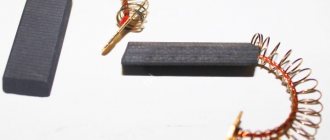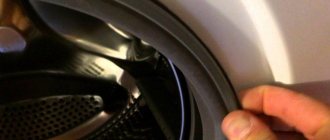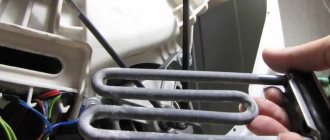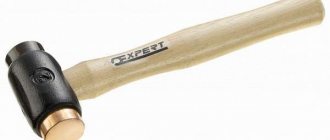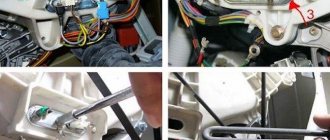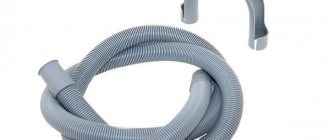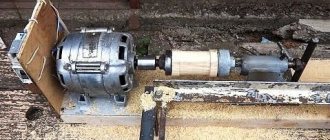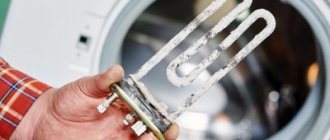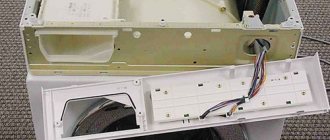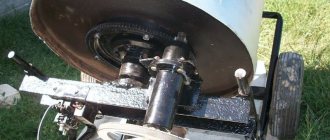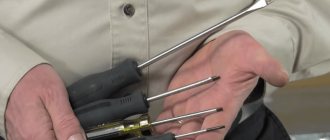Service center technicians repair Beko washing machines at home. Specialists eliminate various types of problems. We use original spare parts for washing machines and modern equipment. The master leaves on the day of the request or when the client needs it.
The Beko brand appeared back in 1997 and immediately began producing high-quality products that won thousands of consumers around the world. The Turkish brand has proven the reliability of its equipment. Beko still maintains its leading position today. This also applies to washing equipment - functional, practical assistants to the modern housewife. But, like any device, washing machines sometimes break down. And then our service specialists come to the rescue.
There is no need to try to repair your Beko washing machine yourself. This can completely damage it, and then restoring the equipment’s functionality will require large expenses. Contact a professional for repairs.
Find out the price for repairing Beko washing machines
| External sign | Possible damage | Solution | price, rub. |
| Washing machine won't turn on | |||
| The power cord is broken | Cord needs replacement | from 1500 to 3500 with parts | |
| Power button doesn't work | Button replacement required | from 1500 to 4500 with parts | |
| Electrical module failure | Electrical module repair | from 3500 to 4500 with parts | |
| The washing machine does not drain | |||
| The drain pump is humming. Drain hose clogged | Cleaning the drain system | from 2500 | |
| Drain pump hums: Filter is clogged | Cleaning the drain system | from 2500 | |
| The drain pump is humming: The pipe is clogged | Cleaning the drain system | from 2500 | |
| The drain pump is humming: The pipe is clogged | Replacing the drain pump | from 3000 to 4500 with parts | |
| The drain pump does not hum: The drain pump is burnt out | Replacing the drain pump | from 3000 to 4500 with parts | |
| The drain pump does not hum: The electronic module is faulty | Depending on model | from 3500 to 5000 with parts | |
| The washing machine does not spin | |||
| The drum does not turn by hand | Bearings jammed | from 3000 to 4500 without parts | |
| The drum is difficult to turn by hand | Bearings jammed | from 3000 to 4500 without parts | |
| The drum rotates easily: The belt has broken or fallen off | Belt replacement | from 2500 to 4500 with parts | |
| Drum spins easily: Motor is faulty | Engine repair or replacement | from 3000 to 4500 with parts | |
| Drum spins easily: Electronic module is faulty | Electronic module repair | from 3500 to 4500 with parts | |
| The washing machine does not heat up | |||
| Tensioner is faulty | Replacing tena | from 3000 to 4500 with parts | |
| Electronic module is faulty | Module repair | from 3000 to 4500 with parts | |
| Tensioner is faulty | Replacing the temperature sensor | from 2500 to 4000 with parts | |
| The washing machine does not fill with water | |||
| Blockage in the fill system | Cleaning the water inlet system | from 2500 with parts | |
| Electronic module is faulty | Module repair | from 3500 to 5000 with parts | |
| Water inlet valve is faulty | Valve replacement | from 2500 to 4500 with parts | |
| Washing machine won't start | |||
| The hatch lock is faulty | Hatch lock repair | from 2500 to 5000 with parts | |
| Electronic module is faulty | Module repair | from 2500 to 5000 with parts | |
| The hatch is not tightly closed | Try opening the hatch and closing it more tightly | FOR FREE | |
| The washing machine is noisy when spinning | |||
| Bearings are faulty | Replacing oil seal bearings | from 3000 to 4500 without parts | |
| Shock absorbers are broken | Replacing shock absorbers | from 3500 to 6500 with parts | |
| The drain pump is faulty | Pump replacement | from 3000 to 4500 with parts | |
| The washing machine does not spin | |||
| Water level sensor is faulty | Replacing the water level sensor | from 2500 to 4500 with parts | |
| Engine faulty | Engine repair | from 3000 to 4500 | |
| The drain pump is faulty | Pump replacement | from 3000 to 4500 with parts |
Only a specialist can accurately determine the cause of the breakdown and the cost.
The B-service workshop repairs Beko washing machines at home, providing a range of services. This saves you from the need to take the household appliance to service yourself.
If your machine breaks down, don’t hesitate to call us!
Washing machine shock absorbers: how to remove, change and repair it yourself
Shock absorbers (dampers) are devices included in the design of a washing machine, designed to dampen (dampen) vibrations that occur during washing. If the washing machine has strong vibrations or uncharacteristic knocking noises, then most likely the shock-absorbing devices have failed. Shock absorbers were used in old car models, but modern cars use dampers, they are similar to each other, their only difference is the absence of return springs. Dampers are located at the bottom of the unit under the tank, and springs are installed at the top of the housing to suspend the tank.
Advantages of our workshop
· Wide range of services: diagnostics, installation of household appliances, configuration, repair, provision of warranty;
· Affordable prices. The cost of our service includes the price of parts that need to be replaced;
· Convenient work schedule. You can contact a specialist for help on weekdays, holidays and weekends.
· Large staff of professionals. This allows us to accept orders in Moscow, Moscow Region and other regions, carrying out even the most complex work with high quality.
· Use of original spare parts to ensure longevity and reliable service of the device.
· Prompt response to calls.
· Guarantee of quality of service, placing a mark in the product passport.
The device of shock absorbers and dampers of the washing machine
The friction shock absorber (1) is designed for centrifugal drum washing machines. The shock absorber contains a housing (2) and a movable pusher (4) installed in it parallel to its longitudinal axis (2a) and removed from the housing (2); at its end, located in the housing (2), a friction lining is movably installed. The friction lining (8) or the body carrying the friction lining (8) is equipped with an installation socket (22) for receiving a spacer (23). The friction lining (8) is movably mounted on the pusher (4), the guide element (20) is pre-tensioned between the friction lining (8) and the guide surface or sliding surface (21) matched with it, and a spacer (23) is provided. to establish a frictionally effective geometric parameter (24) and/or to tension the friction lining (8) to influence the frictional force between the friction lining and the matched sliding surface. The spacer (23) is made in the form of a fixing or fastening element of the guide element (20) matched with the friction lining (8). 2 n. and 21 salary f-ly, 9 ill.
Each damper operates due to the resistance that arises during the mutual movement of its components. Most shock absorbers have a classic configuration and consist of a fixed body, a cylinder and a movable rod (piston) that runs in the cylinder.
Various polymer and rubber gaskets (O-rings) lubricated with a special lubricant are installed on the rod or inside the body, ensuring tight interaction of the surfaces. The damper body is attached to the bottom of the machine through a special silent block (rubber-metal hinge), and the rod is connected to the tank of the machine. To ensure longitudinal movement, both parts are secured using sliding metal pins, and the pin itself is secured against axial displacement with keys of various types.
Shock absorbers in different models of washing machines may differ:
- Dimensions (length, width);
- Material (plastic, metal);
- Shape and type of fastening.
For example, dampers for the Candy washing machine have a rather specific housing mount. It is fastened with rivets to the bottom of the unit, and the rod is attached to the tank through a bushing using a bolt.
Dampers for Bosch washing machines have a durable plastic body and a cylinder with a metal base. They are attached to the drum with a bolt through a metal rubberized bushing, and to the body through a polymer bushing with a plastic pin.
How to apply for a visit from a master?
You can invite a specialist to service household appliances by phone or by leaving a request on the website. In the application you must indicate the brand, name and describe why the Beko washing machine is broken (does not spin, does not turn on, does not rotate the drum). The more information you provide, the better the quality of the specialist’s work will be. He will know exactly how much time he will need to travel in order to plan his schedule and pay maximum attention to each call.
Repairing Beko washing machines in Moscow at home is a way out of any situation related to a malfunction of a household appliance. Our employees can fix problems of any complexity at home. All work is performed in your presence. You can assess the scale of the repair yourself and verify the quality of the new spare parts.
Beko washing machine repair
Washing machines under the Beko are manufactured by the Turkish corporation Koç Holding founded in 1926. The first washing machine was released in 1959. In 2006, the Beko . Beko washing machines belong to the economy class , since the cost is an order of magnitude cheaper than its competitors with similar technical parameters.
The drum of washing machines is made of durable stainless steel, the tank is made of polymer alloys. With reduced weight and dimensions, the design holds much more laundry than analogues in the same price category. The washing machines produced by the company are designed primarily for front-loading format. The manufacturer has also developed a number of special solutions: Silent Tech - a silent electric motor and a specific wall, the machine operates much quieter and with less vibration. Aquawave is an effective and gentle removal of any type of dirt without a parallel negative impact on the external condition of the laundry. Imbalance control, even distribution of loaded clothes. The drum rotation speed is adjusted to the specific volume of laundry. Serious breakdowns in washing machines are relatively rare, especially when it comes to models assembled directly in Turkish factories. The average service life of Turkish units is about 7-10 years.
Quick online diagnostics of washing machine faults (Just select a problem from the list and find out the approximate breakdown)
Most modern Beko washing machines have the function of displaying an error code when certain malfunctions and malfunctions occur. Quite often, understanding what the error code means , you are able or breakdown yourself
For your convenience, a list of error codes for Beko washing machines is provided with an explanation of each specific code . The table also includes a description of the error, the reasons for its occurrence and possible solutions.
The washing machine consists of units that are complex in design, and if they break down, it is better not to try to repair the devices yourself. Moreover, this is due to high voltage and the possibility of flooding neighbors living on the floor, or even two or three floors below.
When carrying out repairs yourself, remember your safety!
Disassemble without disconnecting the equipment from the mains!
It is best to use the services of an experienced technician who is familiar with any problems and can fix the problem. If your washing machine breaks down, entrust the repair to a professional: he will be able to perform all the steps quickly, efficiently and safely.
Decoding Beko error codes
| Error code | Description of the error | Causes and elimination |
| H1 | Temperature sensor faulty | 1. Measure the resistance of the temperature sensor. It is approximately 4700 Ohms at ambient temperature. environment 25 °C. |
| H2 | The heating element is faulty | 1. Disconnect one of the heating element plugs and measure its resistance. It should be 20-30 ohms. 2. Replace the heating element. 3. Replace the electronic controller. |
| H3 | The heating element is constantly on, constant heating | 1. Measure the resistance of the temperature sensor (plug J2). It is approximately 4700 Ohms at an ambient temperature of 25 °C. 2. Replace the electronic board. |
| H4 | The water inlet valve triac is closed | 1. After checking the wires and connections, replace the electronic board. |
| H5 | The drain pump is faulty, the pump is closed and not connected | 1. Check and clean the pump filter. 2. The level of the drain hose should be between 60 cm and 1 m from the floor level. 3. Check the drain hose; it should not be damaged or kinked. |
| H6 | Electric motor triac is faulty | 1. Replace the triac. 2. Replace the module. 3. Replace the engine. |
| H7 | Water level sensor error | 1. Check the washing machine door (must be closed). 2. Check the water tap. 3. Check connections between the water level sensor and the electronic board. 4. Replace the water level sensor. 5. Is 220 Volts supplied to the valve? Also check the voltage at J3 and J4. 6. Replace the fill valve. 7. Replace the electronic module. |
| H11 | There is a break in the electric motor circuit | 1. Check the connection circuit of the motor, board, tachogenerator. 2. Check the integrity of the wiring from the electronic controller to the engine. |
How to call a specialist?
Requests for repairs are accepted daily, from 8 am to 10 pm by phone or using an online application.
8 (985) 181 – 02 – 88
8 (985) 181 – 02 – 88 (Whatsapp)
Leave a request for repairs
Important! When contacting, please provide the following information: Your contact information: name, phone number and address, make of the machine, if possible, send a tag with the serial number and product code of the machine and the day and time of arrival of the technician that suits you.
To carry out repairs and select spare parts for your washing machine, you need to know its model and serial number.
The exact model of the machine is indicated on the tag on the body of the washing machine or stickers, as well as in the operating instructions. If you have already purchased replacement parts yourself, please indicate only the make of the machine. For example, BEKO WKD 25105 TS.
places where washing machines may contain a sticker with all the necessary service information.
1. Under the hatch door on the body. Most often, on front-type washing machines, the serial number is located on a sticker under the hatch door. Either on the door itself or on the body. In most cases, the number consists of numbers, less often of numbers and letters .
2. On the back side of the pump filter hatch. On vertical models, a sticker with a service number is most often located on the inside of the small hatch that covers the pump filter.
3. On the back wall. The back wall of the washing machine is a traditional place for all kinds of service information. If you couldn’t find a sticker with a number on the front, then it was probably preserved on the back wall.
4. In the passport or instruction manual. Finally, the serial number can sometimes be found in the documents that come with the purchase of the washing machine. As a rule, the number is located in the passport or warranty card.
The arrows show the location of the tags.
washing machine manufacturers encode on a tag (sticker) what they produced, when, where and from what parts. This information is encoded in two sequences of numbers (letters) product and serial numbers. Their combination is unique and applies only to one specific instance of the washing machine.
Please take a photo of these tags
To maximize the life of your washing machine, you need to carefully read the operating instructions. If you have lost it, here you can select your model and download it in pdf format.
Beko washing machine operating instructions
| BEKO DV 1160 | BEKO WKD 24500 T | BEKO WKL 13500 D |
| BEKO WKB 50831PT | BEKO WKD 25060 R | BEKO WKL 13580 D |
| BEKO WKB 51021 PTMS | BEKO WKD 25100T | BEKO WKL 15040 KB |
| BEKO WKB 51041 PTC | BEKO WKD 25125 T | BEKO WKL 15100 PB |
| BEKO WKB 60821 PTM | BEKO WKD 65080 | BEKO WMD 23500TS |
| BEKO WKB 61041PTMC | BEKO WKD 65105 | BEKO WMD 23580T |
| BEKO WKB 75107 PT | BEKO WKD 73500S | BEKO WMD 26100TS |
| BEKO WKD 23500 T | BEKO WKD 75100 | BEKO WMD 26140TS |
| BEKO WKD 23580 T | BEKO WKE 14580D | BEKO WME 25080T |
| BEKO WKD 24580T | BEKO WKL 13560 K | BEKO WKB 50821 PTM |
| BEKO WKD 25085 T | BEKO WKL 14580 D | BEKO WKB 51021 PTMA |
| BEKO WKD 25106 PT | BEKO WKL 15080 DB | BEKO WKB 51041 PTAN |
| BEKO WKD 54580 | BEKO WMD 23500T | BEKO WKB 51241 PTS |
| BEKO WKD 65100 S | BEKO WMD 23580 R | BEKO WKB 61041PTMAN |
| BEKO WKD 73500 | BEKO WMD 26100T | BEKO WKB 75087 PT |
| BEKO WKD 75080 | BEKO WMD 26140T | BEKO WKB 75127 PT |
| BEKO WKE 14560D | BEKO WMD 55100 | BEKO WKD 23560R |
| BEKO WKL 13550 K | BEKO WKB 50821 PT | BEKO WKD 24560R |
| BEKO WKL 14560 D | BEKO WKB 51021 PT | BEKO WKD 25080 T |
| BEKO WKL 15060 KB | BEKO WKB 51031PTS | BEKO WKD 25105 TS |
| BEKO WMB 81231 PTLMC | BEKO WKB 51241 PTC | BEKO WKD 54500 S |
| BEKO WMD 23560R | BEKO WKB 61021 PTMA | BEKO WKD 65100 |
| BEKO WMD 25100R | BEKO WKB 61241PTMC | BEKO WKD 65125 |
| BEKO WMD 26120TS | BEKO WKB 75107 PTS | BEKO WKD 73580 |
| BEKO WMD 55080 | BEKO WKD 23520 T | BEKO WKE 14500D |
| BEKO WKB 50621 PT | BEKO WKD 24500 TS | BEKO WKL 13540 K |
| BEKO WKB 50841 PT | BEKO WKD 25065 R | BEKO WKL 14500 D |
| BEKO WKB 51031PT | BEKO WKD 25105 T | BEKO WKL 15050 KB |
| BEKO WKB 51041 PTS | BEKO WKD 54500 | BEKO WMB 71231 PTLC |
| BEKO WKB 60841PTM | BEKO WKD 65085 | BEKO WMD 23520T |
| BEKO WKB 61041PTMSC | BEKO WKD 65105 S | BEKO WMD 25080R |
| BEKO WKB 75107 PTA | BEKO WKD 73520 | BEKO WMD 26120T |
| BEKO WKD 23500 TS | BEKO WKD 75100 S | BEKO WMD 55060 |
Washing machines from manufacturers that we repair
How to remove and check shock absorbers from a washing machine
All damping elements are protected by the body and lining; in order to get to the damper mounts for different models of washing machines, different disassembly approaches are required.
When replacing dampers on a washing machine, there is no need to completely disassemble it. For example, to provide access to shock absorbers on Bosch washing machines, simply remove the front cover. In these models, the dampers have a classic single-bolt mount, located at the bottom of the unit. The upper part of the attachment to the tank is held on by latches that are part of it.
Checking integrity and causes of failure
The first symptom that indicates that the spring or piston in the shock absorber is not working correctly is the appearance of squeaks or knocks. Also, tight rotation of the drum may indicate this problem. In the machine, the spring can be removed separately. This shock-absorbing element is called a damper.
Checking whether the shock absorber is working properly is quite simple. It is necessary to remove the top cover, then press on the top of the tank, achieving a displacement of 5-8 centimeters. Release the tank sharply and then see if it regains its position. If this does not happen, it's time to change the shock absorbers. The most common causes of failure include:
- Natural wear of liners or gaskets during active use.
- Deformation of the structure caused by careless transportation of the product or defective product from the factory.
- Worn bolts that secure the shock absorber in the correct position.
If this component breaks down, it must be replaced as quickly as possible, since operating the machine can become dangerous. Remember that if one of several shock absorbers is damaged, all of them must be replaced. New parts guarantee the longest possible life of the device, while repaired parts can fall apart after just a couple of washes.
